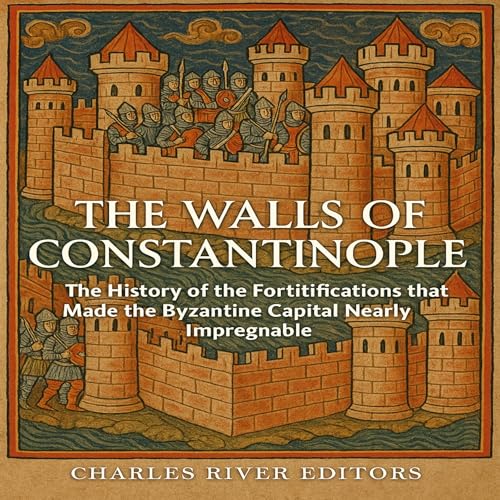
The Walls of Constantinople
The History of the Fortifications That Made the Byzantine Capital Nearly Impregnable
Failed to add items
Add to basket failed.
Add to Wish List failed.
Remove from Wish List failed.
Follow podcast failed
Unfollow podcast failed
Buy Now for $9.68
-
Narrated by:
-
KC Wayman
About this listen
It was Constantine the Great who first decided that Rome, exposed and vulnerable near the gathering masses of barbarians moving into Germania and Gaul in the early 4th century, was a strategically unsafe base for the empire, and thus expanded the city of New Rome on the Dardanelles straits, creating what eventually became Constantinople. By moving the political, administrative and military capital of the Empire from Rome to the East, as well as the Imperial court with all its attendant followers, Constantine laid the groundwork for the eventual schism which saw the two parts of the Roman Empire become two entirely separate entities, go their own way, and eventually collapse piecemeal under repeated waves of invasion.
As a result, the Byzantine Empire was the heir to two great cultures that cradled and nurtured European civilization: Greece and Rome. Constantinople, now called Istanbul, became a center of power, culture, trade, and technology poised on the edges of Europe and Asia, and its influence was felt not only throughout Europe but the Middle East, Africa, Central Asia, and the Far East. Coins dating from the reign of Emperor Justinian I (r.527-565) have been found in southern India, and Chinese records show that the “Fulin,” as the Chinese named the Byzantines, were received at court as early as 643. For nearly a thousand years, the Byzantine Empire protected Europe from Islamic powers, allowing it to pursue its own destiny, and Byzantium was a polyglot society in which a multitude of ethnic groups lived under the emperor prizing peace above war.
In terms of geopolitics, perhaps the most seminal event of the Middle Ages was the successful Ottoman siege of Constantinople in 1453. Naturally, the Ottoman Empire would also use Constantinople as the capital of its empire after their conquest effectively ended the Byzantine Empire.



